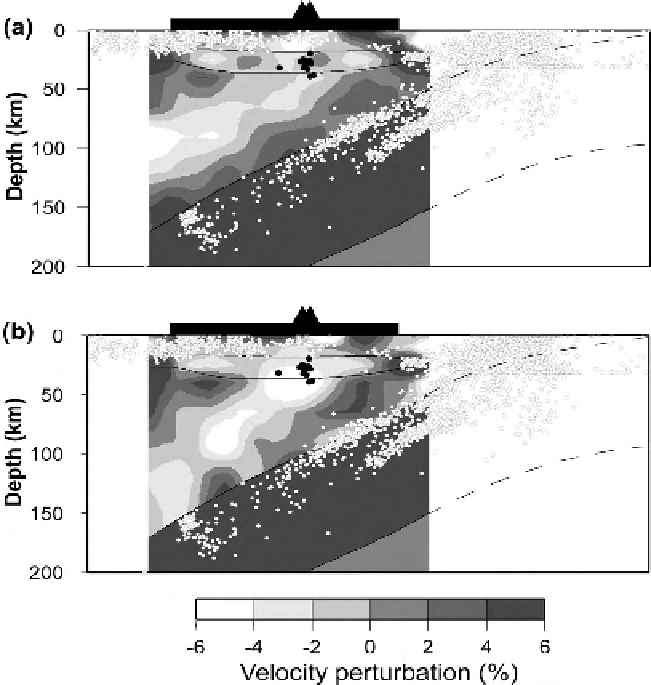Geoscience Reference
In-Depth Information
Figure 9.48.
Cross sections perpendicular to the Japan Trench in northeastern
Japan (at 37-38
◦
N) where the Pacific plate is subducting beneath the North
American/Okhotsk plate showing (a) P-wave and (b) S-wave velocity perturbations
determined by tomographic methods. Circles, focal-depth distribution of
earthquakes recorded by local seismic networks; black circles, low-frequency
microearthquakes. The thick horizontal bar indicates the position of mainland Japan.
The solid triangle marks the volcanic front. The 80-km-thick subducting slab has
P- and S-wave velocities 6% higher than those of the surrounding mantle. A general
assumption for the double seismic zone is that it is due to the unbending of the
subducting plate. Alternative mechanisms include the transformation of lenses of
subcrustal basaltic heterogeneities into eclogite and the dehydration of serpentine.
(After Nakajima
et al
., Three-dimensional structure of
V
p
,
V
s
and
V
p
/V
s
beneath
northeastern Japan: implications for are magnatism and fluids.
J. Geophys. Res.,
106
,21843-57, 2001. Copyright 2001 American Geophysical Union. Reprinted by
permission of American Geophysical Union.)
rising and eventually causing partial melting within the overlying mantle wedge
(see Section 10.2.1 for more discussion).
Seismic activity at subduction zones is not constant along the length of the
zone: many quiet regions, or seismic gaps, have been observed. Such gaps are
receiving particular attention since it is likely that a gap will be the location of

